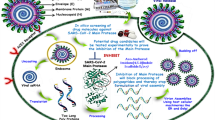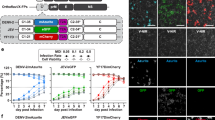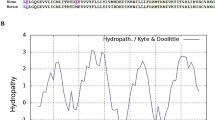Abstract
The discovery of new anti-influenza drugs is urgent, particularly considering the recent threat of swine flu. In this study, the influenza virus M2 protein was expressed in HEK293 cells and shown to have selective ion channel activity for monovalent ions. The anti-influenza virus drug amantadine hydrochloride significantly attenuated the inward current induced by hyperpolarization of HEK293 cell membranes. Although adamantine derivatives are the only M2 drugs for influenza virus A, their use is limited in the US due to drug resistance. Here we report the discovery of multiple M2 inhibitor lead compounds that were rapidly generated through focused screening of a small primary amine library. The screen was designed using a scaffold-hopping strategy based on amantadine. This study suggests that an antiviral compound directed against a conserved motif may be more useful than amantadine in inhibiting viral replication.
Similar content being viewed by others
Article PDF
Author information
Authors and Affiliations
Rights and permissions
About this article
Cite this article
Hu, W., Zeng, S., Li, C. et al. Discovery of multiple lead compounds as M2 inhibitors through the focused screening of a small primary amine library.. Nat Prec (2009). https://doi.org/10.1038/npre.2009.3688.1
Received:
Accepted:
Published:
DOI: https://doi.org/10.1038/npre.2009.3688.1



